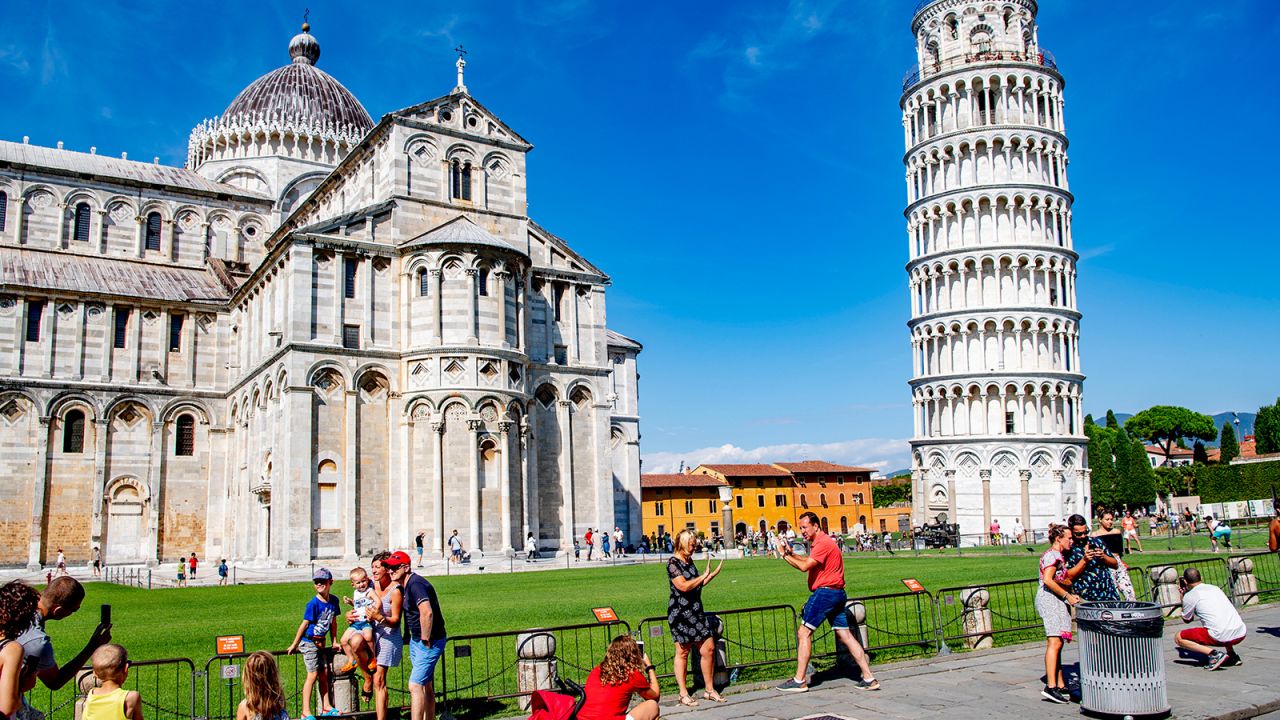The Leaning Tower of Pisa, often referred to simply as the Tower of Pisa, is one of Italy’s most iconic landmarks and a must-visit destination for travelers from around the world. This medieval marvel, with its distinct tilt, has captured the imagination of many for centuries. In this article, we will take you on a journey to the Leaning Tower of Pisa, exploring its history, architecture, and the experience of visiting this architectural wonder.

Other interesting articles > Welcome to Summer: Embrace the Sun and Fun
A Historical Perspective
The Leaning Tower of Pisa is part of the Piazza dei Miracoli, or the Square of Miracles, located in the beautiful Italian city of Pisa. It is one of the most recognized and celebrated architectural structures in the world. Here’s a brief overview of its history:
Construction
The tower’s construction began in August 1173, and it took approximately 199 years to complete. The initial construction was halted several times due to wars, financial difficulties, and engineering challenges.
Architectural Marvel
The tower is renowned for its stunning Romanesque design and the characteristic lean that sets it apart from other bell towers. The lean was a result of unstable foundation soil and has made the tower both a marvel and a concern over the centuries.
Purpose and Function
The primary function of the tower is as a freestanding bell tower for the nearby cathedral. Its seven bells would ring to signify various religious events and times of the day.
Preservation and Restoration
The Tower of Pisa has undergone several restoration projects over the years to ensure its stability and prevent further tilting. Significant restoration efforts were made between 1990 and 2001.
Architectural Features
The Leaning Tower of Pisa is not just famous for its lean but also for its remarkable architectural features that have captivated visitors for centuries. Here are some of its noteworthy characteristics:
Marble Facade
The tower’s exterior is adorned with white and gray marble, which creates a visually stunning contrast. The marble facade features intricate designs, including arches, columns, and decorative elements.
Arches and Columns
Romanesque architectural elements like arches and columns are prominent in the tower’s design. These features are not only aesthetically pleasing but also contribute to the structure’s stability.
Bells and Belfry
The tower houses seven bells, each with a specific purpose and musical note. The belfry is the chamber that houses the bells and is a notable part of the tower’s interior.
Height and Tilt
The tower is approximately 56 meters (184 feet) tall on the low side and 56.67 meters (186.2 feet) on the high side. Its lean has been corrected to some extent through restoration efforts, reducing the tilt from 5.5 degrees to about 3.97 degrees.
Visiting the Leaning Tower of Pisa
If you plan to visit the Leaning Tower of Pisa, there are several aspects to consider for an enjoyable and memorable experience:
1. Tickets and Timings
The tower has specific visiting hours, and it’s advisable to purchase tickets in advance to avoid long queues. Timings can vary seasonally, so check ahead to plan your visit accordingly.
2. Climb the Tower
Visitors have the unique opportunity to climb to the top of the Leaning Tower of Pisa. The journey to the top involves a series of narrow, winding staircases, which can be physically demanding. However, the reward is an incredible panoramic view of the city.
3. Piazza dei Miracoli
The Leaning Tower is part of the larger Piazza dei Miracoli, which also includes the Pisa Cathedral, the Baptistery of Pisa, and the Camposanto Monumentale. Exploring the entire square is recommend, as each structure has its unique historical and architectural significance.
4. Photography
The Leaning Tower is an architectural marvel, and taking photos is a must. Be sure to capture both the iconic leaning tower and the picturesque surroundings.
5. Explore Pisa
Pisa is a charming city with more to offer than just its famous tower. Take some time to explore the city’s historic streets, piazzas, and indulge in its culinary delights.
The Leaning Tower of Pisa in Popular Culture
The Leaning Tower of Pisa has made numerous appearances in popular culture and media. Here are a few notable examples:
Literature
In literature, the tower has been featured in various works, including E. M. Forster’s “A Room with a View,” where it plays a significant role in the story.
Film and Television
The tower’s distinct appearance has made it a popular setting for films and television shows. One of the most famous instances is its appearance in the James Bond film “GoldenEye.”
Music
The Leaning Tower has been referenced in songs, with artists like Billy Joel mentioning it in his song “The Ballad of Billy the Kid.”
Art
The tower has been a subject of artistic inspiration, with countless paintings and illustrations depicting its unique appearance.
Conclusion
The Leaning Tower of Pisa is not just a famous tourist attraction but also a symbol of human ingenuity and architectural achievement. Its historical significance, remarkable design, and iconic tilt continue to captivate travelers from all over the world. Whether you’re a history enthusiast, an architecture lover, or simply a curious traveler, a visit to the Leaning Tower of Pisa is an experience that will stay with you for a lifetime.
Other interesting articles > Exploring the Fascinating Wonders of the Big Ben Tower